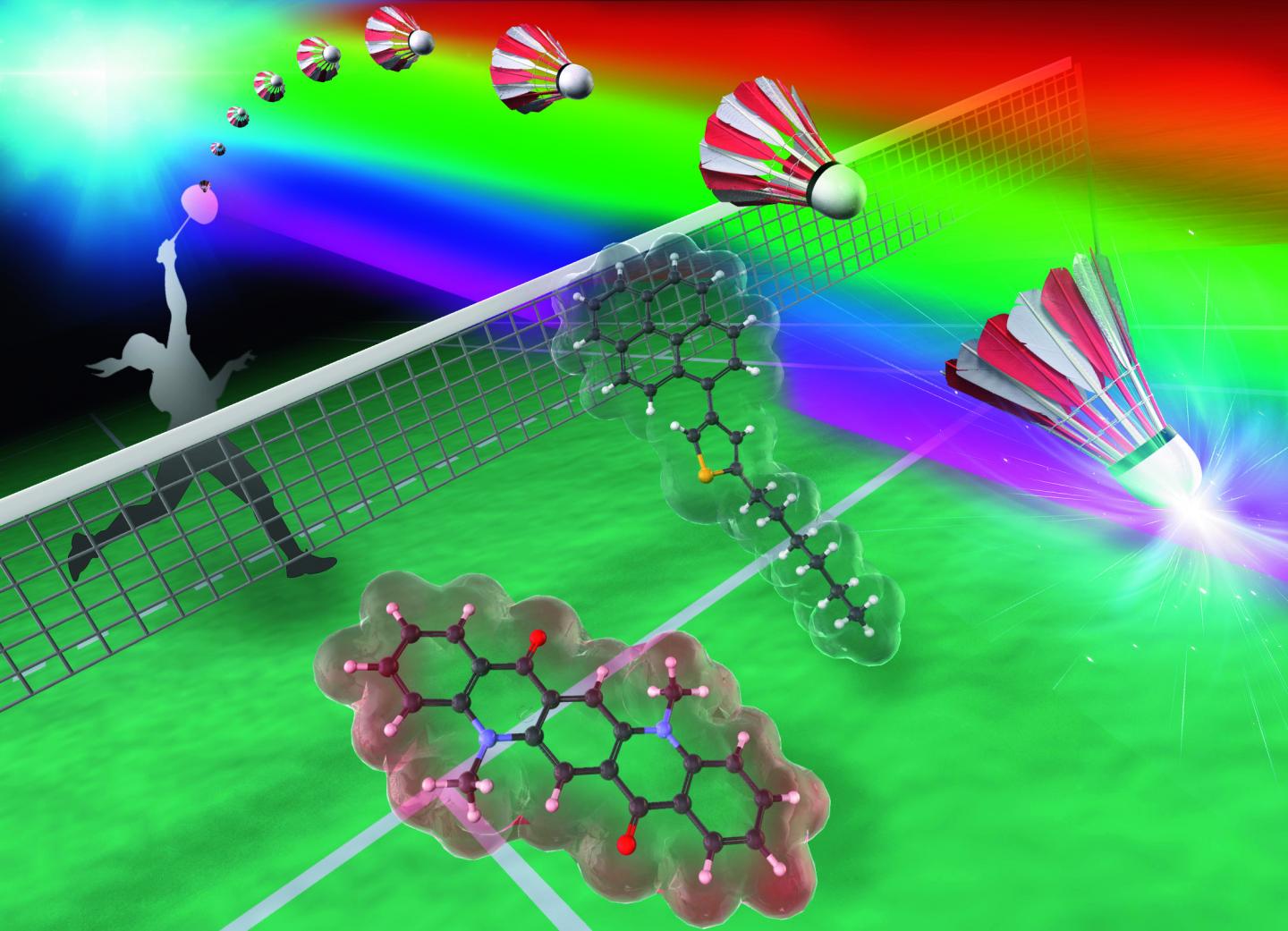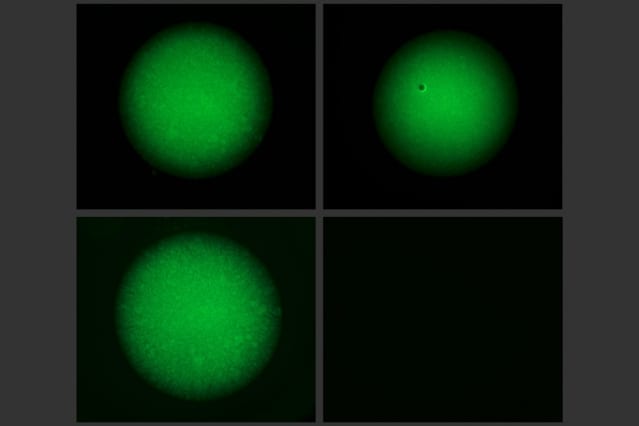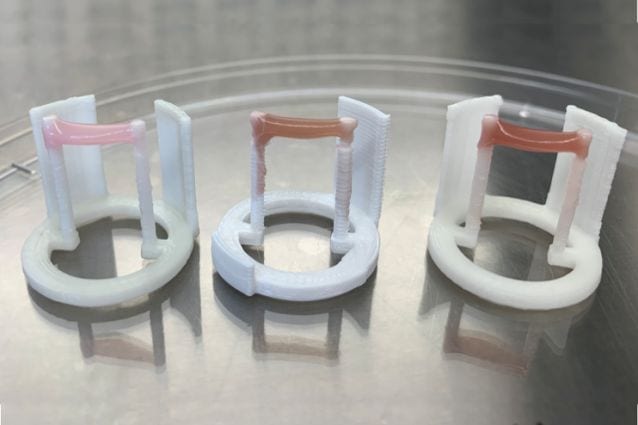
The building blocks of rationally designed chemicals are simple elements: carbon, hydrogen, oxygen and so on. These elements can be combined in myriad ways to accomplish a variety of chemicals with different characteristics. Even the same chemical can be treated differently – with pressure or heat, for example – to show drastically different properties. A simpler version is to think of how water can be boiled to cook pasta or frozen to become ice – the same ingredient can be made into two different states via temperature treatment.
Now, researchers are working to better control how the chemicals respond to treatment, as well as how to reverse the chemicals back to their original state with little to no interference. Such control would allow scientists to prepare the sensing systems of environmental stimuli, as well as continuously repeat the sensing.
A team of researchers at Yokohama National University has achieved such results with a specific compound that can emit light and has potential applications in the next generation of smart devices such as wearable devices and anti-counterfeiting paintings. They published their results online on September 12, ahead of print in Chemical Communications.
The compound is a derivative of thiophene, which is a dye with mechanochromic luminescence properties — it changes color under physical change. It starts emitting a violet glow under the irradiation of UV light, but as it is exposed to mechanical stimuli, such as grinding, the violet glow shifts slightly to blue. Another external intervention can make the compound heal and become violet again.
“Mechanochromically luminescent (MCL) dyes have recently attracted considerable interest on account of their potential applications,” said Suguru Ito, paper author and associate professor in the Department of Chemistry and Life Science in the Graduate School of Engineering Science at Yokohama National University. “However, it is still very difficult to rationally design MCL dyes with desired characteristics.”
In this study, however, researchers discovered that by adding another chemical called DMQA, the dye changed to orange under mechanical stimuli. The dye did not need more external stimuli to revert back to violet either.
“We combined two kinds of rational design guidelines for tuning the luminescent properties, resulting in the desired — and unprecedented– characteristics of high-contrast, self-recovering dyes,” Ito said.
The first rational design guideline is that the recovery behavior of the dye can be attributed to the length of the alkyl group in the compound — a longer chain of carbon atoms with hydrogens in the dye allows the dye to recrystallize and heal in time. The second is that by mixing with DMQA, the color range between the original state and ground state differ greatly.
“The next step is to establish a rational design guideline to control the dye’s responsiveness to mechanical stimuli,” Ito said. “My ultimate goal is to develop an innovative pressure-sensing system by rationally creating a material that can change its emission color in stages in response to mechanical stimuli of different intensity.”
With such control, Ito could use mechanical stimuli to precisely induce a specific and intended response. A little pressure could shift the violet glow to blue, a little more pressure pushes the glow closer to red. A system with such ability would allow for stepwise changes and recoveries by the stimulus, which could be highly beneficial in the next generation of smart materials, according to Ito.
Learn more: Researchers design tunable, self-recovering dyes for use in next-generation smart devices
The Latest on: Smart materials
[google_news title=”” keyword=”smart materials” num_posts=”10″ blurb_length=”0″ show_thumb=”left”]
via Google News
The Latest on: Smart materials
- Smart Home Devices We’re Obsessed With This Yearon April 29, 2024 at 6:49 pm
Smart device technology has been rapidly growing in popularity, and we are soaking it in. Our kids may watch The Jetsons and enjoy the futuristic comparisons, but they don't realize the many ways ...
- Ampacet to show LIAD Smart Color automation at NPE2024on April 29, 2024 at 1:26 pm
Ampacet LIAD (S22097) at NPE2024 will be demonstrating two new LIAD Smart products: SpectroMetric 6 and the BlendSave Compact.
- Scientists develop strong yet reusable adhesive from smart materialson April 29, 2024 at 11:53 am
Scientists from Nanyang Technological University, Singapore (NTU Singapore) have developed a smart, reusable adhesive more than 10 times stronger than a gecko's feet adhesion, pointing the way for ...
- Start your week smart: Trump on trial, presidential poll, measles on the rise, Chinese influence, Andrew Tateon April 28, 2024 at 7:02 am
TV and streaming FX’s “The Veil” is an international spy thriller starring Elisabeth Moss, Yumna Marwan, Dali Benssalah and Josh Charles. It premieres Tuesday on Hulu.
- ‘Smart Casual’ Is Menswear’s Most Dominant Dress Code. Here’s How to Nail It.on April 28, 2024 at 6:00 am
The frustration at not being able to nail “smart casual” is palpable—and understandable: As the phrase itself suggests, it’s an in-between approach that requires dressing comfortably yet also ...
- Meta’s Ray-Ban Smart Shades Get a Fresh Blast of AIon April 27, 2024 at 4:30 am
Plus: Leaked details tell us more about the new Google Pixel 8A, Freitag’s environmentally conscious bag is entirely recyclable, and it’s time to unpack a whole bunch of tech acronyms.
- This is the best smart accessory you didn’t know you neededon April 27, 2024 at 2:40 am
The Nix Mini 2 is a smart, portable color wizard that scans colors in the real world and transposes them to digital formats. It syncs with your mobile devices.
- Former Sheriff's Deputy Convicted of Misdemeanor in Shooting Death of Christian Glasson April 26, 2024 at 6:26 pm
A former Colorado sheriff’s deputy has been convicted of a misdemeanor in the shooting death of a 22-year-old man in distress who had called 911 after his car got stuck in a small mountain community ...
- From Mud Bricks to Smart Concrete: A Brief History of Building Materials Technologyon April 26, 2024 at 5:34 am
From mixing lime with water to self-sensing concrete, building materials technology has come a long way—and so have building standards.
- Energy-smart bricks keep waste out of landfillon April 23, 2024 at 10:03 am
Engineers have invented energy-efficient bricks with scrap materials, including glass, that are normally destined for landfill.
via Bing News










